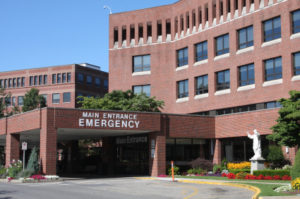Even though the rate at which non-Medicaid recipients inappropriately use hospital emergency rooms exceeds the rate of inappropriate use among Medicaid patients, a number of states are launching efforts to reduce ER overuse among their Medicaid recipients.
Medicaid patients currently use – as distinguished from inappropriately use – hospital ERs at twice the rate of privately insured patients, typically for a number of reasons: they are less healthy than insured patients; they have a more difficult time finding primary care physicians who will treat them; and they have jobs that prevent them from going to doctors during ordinary office hours.
 To address overuse, states are trying a number of approaches. Nearly half of the states are imposing or increasing Medicaid co-pays for ER visits. Some are identifying Medicaid patients among their frequent ER users and making primary care appointments for them before they leave the ER. Some Medicaid managed care plans are doing the same, analyzing ER data among their users and making an extra effort to connect them to primary care physicians.
To address overuse, states are trying a number of approaches. Nearly half of the states are imposing or increasing Medicaid co-pays for ER visits. Some are identifying Medicaid patients among their frequent ER users and making primary care appointments for them before they leave the ER. Some Medicaid managed care plans are doing the same, analyzing ER data among their users and making an extra effort to connect them to primary care physicians.
Some of these approaches are showing promise. When Washington state ER personnel started setting up appointments with primary care patients for Medicaid-insured ER visits, ER use among Medicaid patients fell 9.9 percent in the first year. When a Medicaid managed care plan in St. Louis tried a similar approach, ER use among its members declined 9.5 percent.
To learn more about what states and insurers are doing to reduce ER use among Medicaid patients, see this Stateline report.